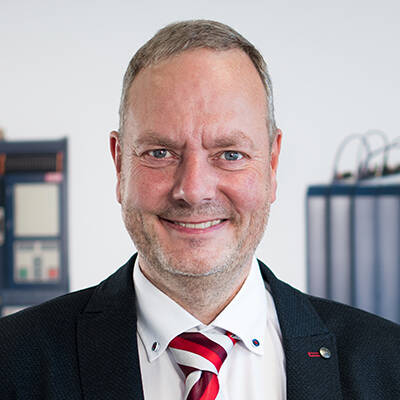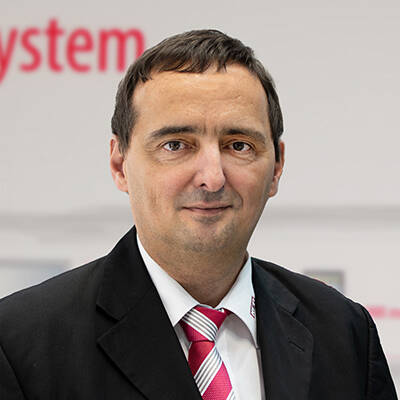Concepts for efficient battery charging management
From ship propulsion to storage and retrieval machine
For applications such as power supply, battery charging and grid support, sustainability and productivity are important factors. Requirements are for example charging technology for a high power range, the possibility of regenerating and buffering energy. KEB’s portfolio offers scalable solutions for charging and storage technologies from 11 kVA to 1,000 kVA from a single source.

Proven products from the industrial environment, which are developed and manufactured by KEB, are used in the systems. This enables the availability of high quantities and cost-optimised packages. In addition to the required hardware, the appropriate COMBIVIS application software is integrated on KEB controls (CODESYS-based control applications according to IEC 61131-3). Advantages include:
- Use on various mains types and mains voltages/frequencies TN-C-S, (IT, TT both in consultation with KEB)
- Low mains feedback THDi < 5 % Typ. 3 %
Function principle of the battery charge management
- For non-rotating applications or static/resting electrical machines
- Common mode filter: Second-order filter against the mains and attenuation of the common-mode component on the DC side
- Energy intake from the mains via the AIC (Active Infeed Converter, also called AFE – Active Front End) → the battery is charged
- Energy output to the grid → Energy flows from the battery via the AIC to the grid
- Application examples:
- Photovoltaic system with storage
- Central storage at the grid connection point
Your contacts at KEB Automation

Jürgen Diekmann
Application Automation and Drives

Michael Schulz
Application Automation and Drives

The third concept is an artificial grid or stand-alone systems for power supply.

The fourth concept shown expands the Artificial Mains Network to a UPS system with mains support and secure power supply.
| AIC/AFE | Active Infeed Converter/Active Front End |
| AMN | Artificial Mains Network |
| BMS | Battery Management System |
| CMS | Capacitor Management System |
| EMC | Electromagnetic compatibility |
| IT | French for Isolé Terre. Type of implementation of a low-voltage grid in electrical power supply. Most important feature: type of earth connection at the power source and the electrical equipment. |
| THD | Total Harmonic Distortion |
| TN-C-S | French for terre neutre combiné séparé. Translates roughly as separate combined neutral earth. Consists of a TN-C system primarily for the distribution network of the energy supplier and a TN-S system in the customer installation. |
| TT | French for terre terre. Type of implementation of a low-voltage grid in electrical power supply. Most important feature: type of earth connection at the power source and the electrical equipment within the building installation. |
| UPS | Uninterruptible Power Supply |



